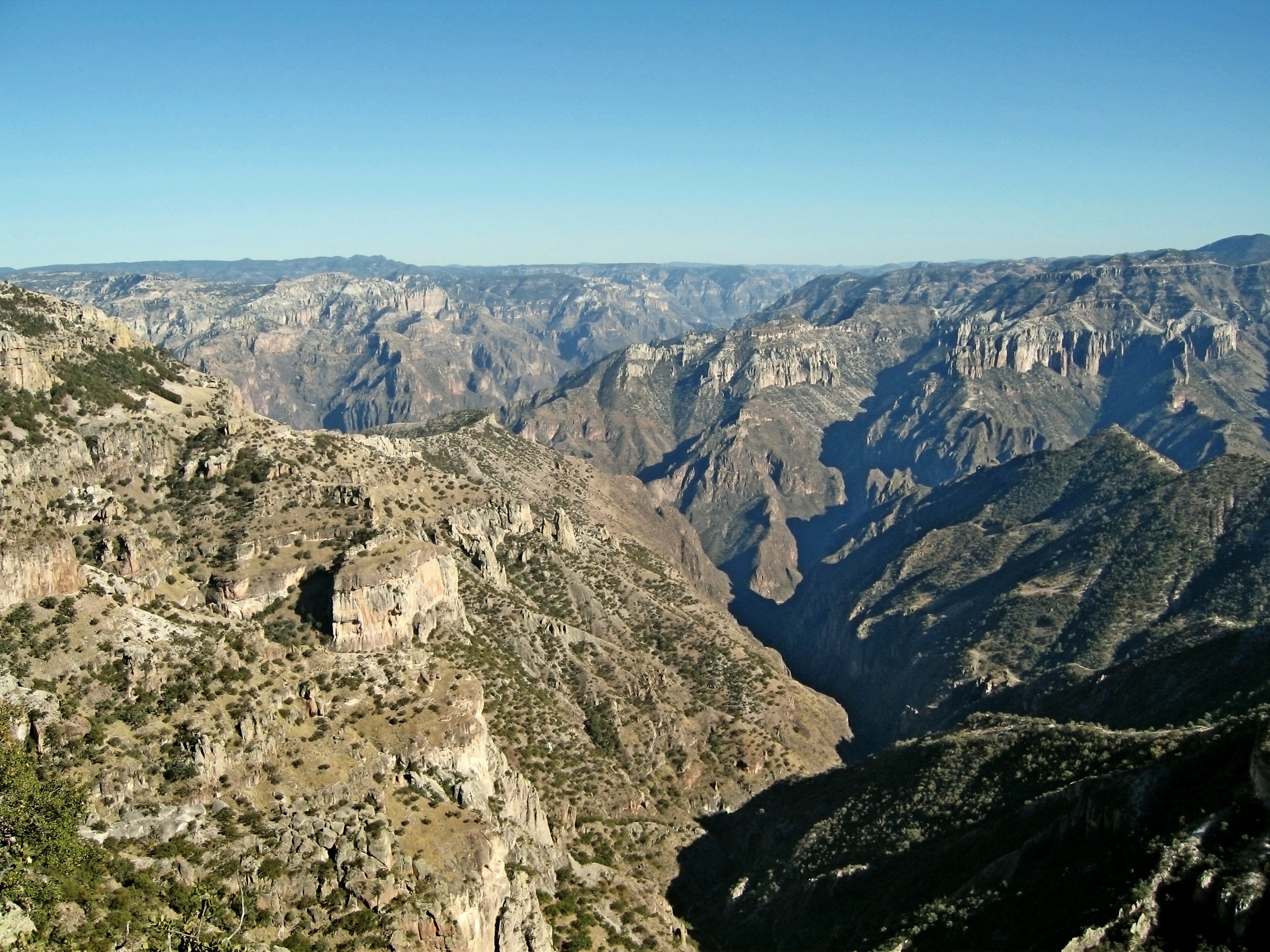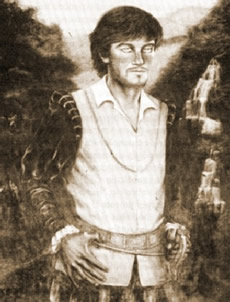|
Río San Pedro Mezquital
The San Pedro Mezquital River ( es, Río San Pedro Mezquital) is a river of Nayarit, Mexico. The river originates in the Sierra Madre Occidental, and flows through Durango and Nayarit states to empty into the Pacific Ocean in Marismas Nacionales Biosphere Reserve.González-Díaz, Alfonso Ángel, Miriam Soria-Barreto, Leonardo Martínez-Cardenas, and Manuel Blanco y Correa (2015) "Fishes in the lower San Pedro Mezquital River, Nayarit, Mexico". ''Check List'' 11(6): 1797, 26 November 2015 doi: http://dx.doi.org/10.15560/11.6.1797 ISSN 1809-127X Fish A few fish species are native to the San Pedro Mezquital River. Among these are the two surviving ''Characodon'' splitfin species, which are both highly threatened. The extinct Durango shiner (''Notropis aulidion'') was native to the Rio Tunal, which forms the headwaters of the San Pedro Mezquital, a Pacific slope river rising near Durango City, Durango Durango (), officially named Estado Libre y Soberano de Durango ( en, Free ... [...More Info...] [...Related Items...] OR: [Wikipedia] [Google] [Baidu] |
Pacific Ocean
The Pacific Ocean is the largest and deepest of Earth's five oceanic divisions. It extends from the Arctic Ocean in the north to the Southern Ocean (or, depending on definition, to Antarctica) in the south, and is bounded by the continents of Asia and Oceania in the west and the Americas in the east. At in area (as defined with a southern Antarctic border), this largest division of the World Ocean—and, in turn, the hydrosphere—covers about 46% of Earth's water surface and about 32% of its total surface area, larger than Earth's entire land area combined .Pacific Ocean . '' Britannica Concise.'' 2008: Encyclopædia Britannica, Inc. The centers of both the |
Mexico
Mexico (Spanish: México), officially the United Mexican States, is a country in the southern portion of North America. It is bordered to the north by the United States; to the south and west by the Pacific Ocean; to the southeast by Guatemala, Belize, and the Caribbean Sea; and to the east by the Gulf of Mexico. Mexico covers ,Mexico ''''. . making it the world's 13th-largest country by are ... [...More Info...] [...Related Items...] OR: [Wikipedia] [Google] [Baidu] |
Nayarit
Nayarit (), officially the Free and Sovereign State of Nayarit ( es, Estado Libre y Soberano de Nayarit), is one of the 31 states that, along with Mexico City, comprise the Federal Entities of Mexico. It is divided in 20 municipalities and its capital city is Tepic. It is bordered by the states of Sinaloa to the northwest, Durango to the north, Zacatecas to the northeast and Jalisco to the south. To the west, Nayarit has a significant share of coastline on the Pacific Ocean, including the islands of Marías and Marietas. The beaches of San Blas and the so-called "Riviera Nayarit" are popular with tourists. Besides tourism, the economy of the state is based mainly on agriculture and fishing. It is also one of two states where the tarantula species ''Brachypelma klaasi'' is found, the other being Jalisco. Home to Uto-Aztecan indigenous peoples such as the Huichol and Cora, the region was exposed to the ''conquistadores'', Hernán Cortés and Nuño de Guzmán, in the 16t ... [...More Info...] [...Related Items...] OR: [Wikipedia] [Google] [Baidu] |
Durango
Durango (), officially named Estado Libre y Soberano de Durango ( en, Free and Sovereign State of Durango; Tepehuán: ''Korian''; Nahuatl: ''Tepēhuahcān''), is one of the 31 states which make up the 32 Federal Entities of Mexico, situated in the northwest of the country. With a population of 1,832,650, the 8th lowest of Mexico's states, Durango has Mexico's second-lowest population density, after Baja California Sur. The capital city, Victoria de Durango, is named after the first President of Mexico, Guadalupe Victoria. Geography General information With , Durango accounts for about 6.3% of the entire territory of Mexico. It is the fourth largest state lying at the extreme northwest of the Central Mexican Plateau, where it meets the Sierra Madre Occidental—the highest peaks in the state. The state has an average elevation of 1,775 meters above sea level, with a mean elevation of 1,750 m in the Valleys region and 2,450 m in the Sierra region. The city of Durango is on the ... [...More Info...] [...Related Items...] OR: [Wikipedia] [Google] [Baidu] |
Sierra Madre Occidental
The Sierra Madre Occidental is a major mountain range system of the North American Cordillera, that runs northwest–southeast through northwestern and western Mexico, and along the Gulf of California. The Sierra Madre is part of the American Cordillera, a chain of mountain ranges (cordillera) that consists of an almost continuous sequence of mountain ranges that form the western 'sounds' of North America, Central America, South America and West Antarctica. Etymology The Spanish name ''sierra madre'' means "mother mountain range" in English, and ''occidental'' means "western", these thus being the "Western mother mountain range". To the east, from the Spanish ''oriental'' meaning "eastern" in English, the Sierra Madre Oriental range or "Eastern Mother Mountains" runs generally parallel to the Sierra Madre Occidental along eastern Mexico and the Gulf of Mexico. The range extends from northern Sonora, a state near the Mexico–U.S. border at Arizona, southeastwards to the Trans ... [...More Info...] [...Related Items...] OR: [Wikipedia] [Google] [Baidu] |
Characodon
''Characodon'' is a genus of splitfins endemic to north–central Mexico. Two of the species are highly threatened and restricted to pools, ponds and springs in the upper San Pedro Mezquital River basin in Durango. The third species, ''C. garmani'', was restricted to springs near Parras in Coahuila, but it became extinct when they dried out. Species There are currently three recognized species in this genus, although some authorities consider the genus to be monospecific, containing only ''Characodon lateralis'' with the other two species classified in the genus ''Goodea''. * '' Characodon audax'' M. L. Smith & R. R. Miller Robert Rush Miller (April 23, 1916 – February 10, 2003) "was an important figure in American ichthyology and conservation from 1940 to the 1990s." He was born in Colorado Springs, earned his bachelor's degree at University of California, Berke ..., 1986 (Bold characodon) * †'' Characodon garmani'' D. S. Jordan & Evermann, 1898 (Parras characodon) * ... [...More Info...] [...Related Items...] OR: [Wikipedia] [Google] [Baidu] |
Durango Shiner
The Durango shiner (''Notropis aulidion'') is an extinct species of freshwater fish of the family Cyprinidae. It was found only in Mexico. The Durango shiner was native to the Rio Tunal, which forms the headwaters of the San Pedro Mezquital River, a Pacific slope river rising near Durango City, Durango, Mexico (Chernoff and Miller 1986). It was taken there only in 1951 and 1961. Its closest relatives were the yellow shiner and the Ameca shiner The Ameca shiner (''Notropis amecae'') is a species of cyprinid fish in the family Cyprinidae. The Ameca shiner was described in 1986 from upper parts of the Ameca River drainage in Jalisco, Mexico. Although already feared extinct by 1969, and li .... References Sources * Notropis Taxa named by Barry Chernoff Taxa named by Robert Rush Miller Fish described in 1986 Taxonomy articles created by Polbot {{Notropis-stub ... [...More Info...] [...Related Items...] OR: [Wikipedia] [Google] [Baidu] |
Durango City
Durango City (, stp, Korian), officially Victoria de Durango is the capital and largest city of the Mexican state of Durango. The city, which is located in Northern Mexico has a population of 654,876 as of the 2015 census, and sits at an altitude of . It is also the municipal seat of the Durango Municipality. The city's official name is Victoria de Durango. The denomination of Victoria was added in honor of the first president of Mexico, Guadalupe Victoria, who was originally from the state of Durango. In the Tepehuán language, the city is known as Korian. The city is located in the Valley of Guadiana and was founded on July 8, 1563, by the Spanish Basque explorer Francisco de Ibarra. During the Spanish colonial era the city was the capital of the Nueva Vizcaya province of New Spain, which consisted mostly of the present day Mexican states of Durango and Chihuahua. The foundation of the city originated due to its proximity to the Cerro del Mercado, located in the northern pa ... [...More Info...] [...Related Items...] OR: [Wikipedia] [Google] [Baidu] |
List Of Rivers Of Mexico
This is a list of rivers of Mexico, listed from north to south. There are 246 rivers on this list. Alternate names for rivers are given in parentheses. Rivers flowing into the Gulf of Mexico *Río Bravo, the name of the Rio Grande in Mexico ** San Juan River *** Pesquería River **** Salinas River ** Salado River *** Sabinas Hidalgo River *** Candela River *** Sabinas River **Conchos River *** Chuviscar River ****Sacramento River *** San Pedro River *** Florida River **** Parral River *** Balleza River (San Juan River) * San Fernando River (Conchos River) * Soto La Marina River (Santander River) ** Purificación River *Pánuco River **Tamesí River (Guayalejo River) ** Chicayán River ** Santa Maria River (Tamuín River) (Tampoán River) *** Río Verde **Moctezuma River *** Tempoal River *** Amajac River *** Extoraz River ***Tula River * Tuxpan Ver (Tuxpan River) **Pantepec River **Vinazco River *Cazones River *Tecolutla River **Necaxa River *Nautla River ** Bobos River *Actopan Ri ... [...More Info...] [...Related Items...] OR: [Wikipedia] [Google] [Baidu] |
.jpg)

